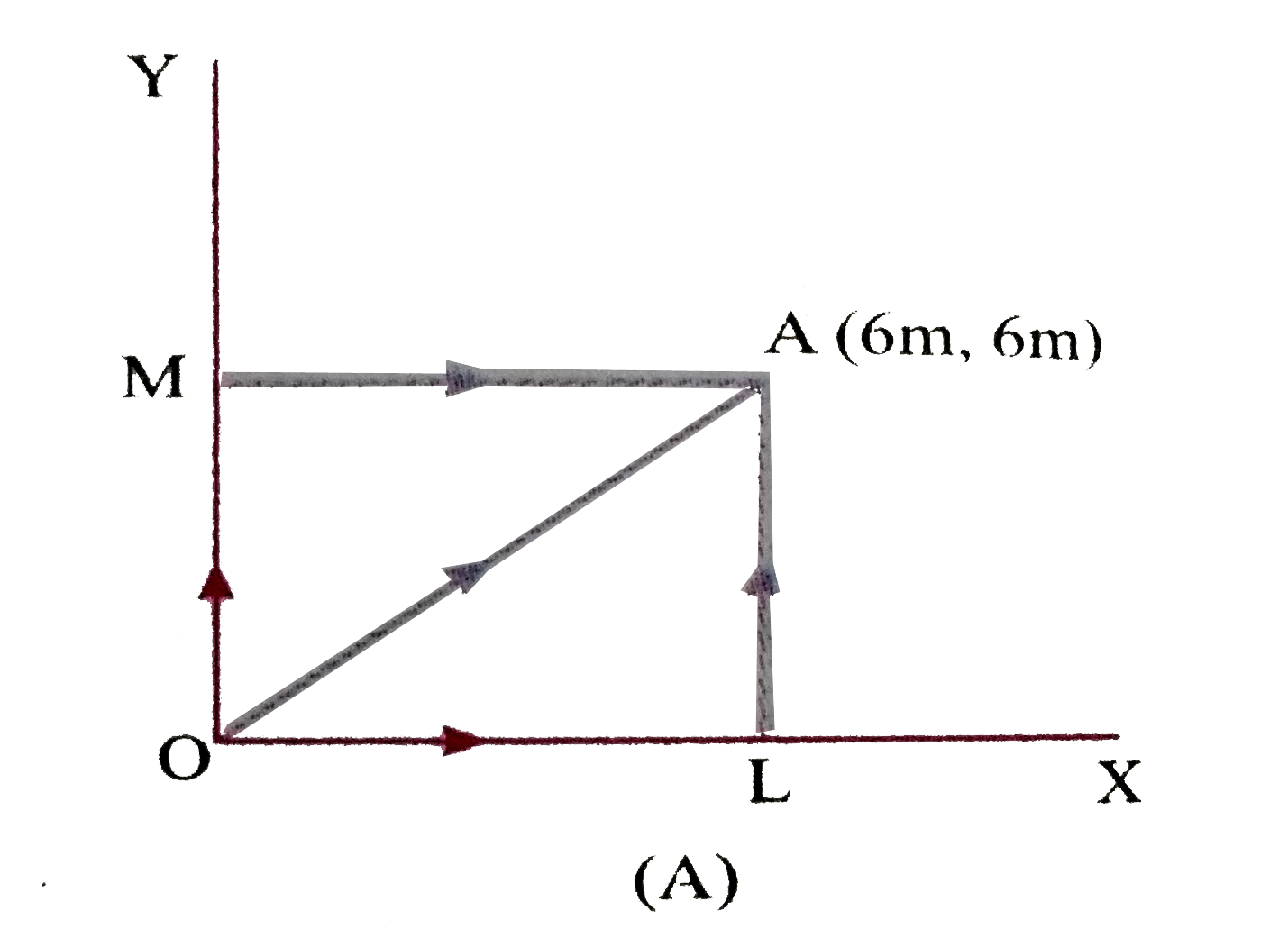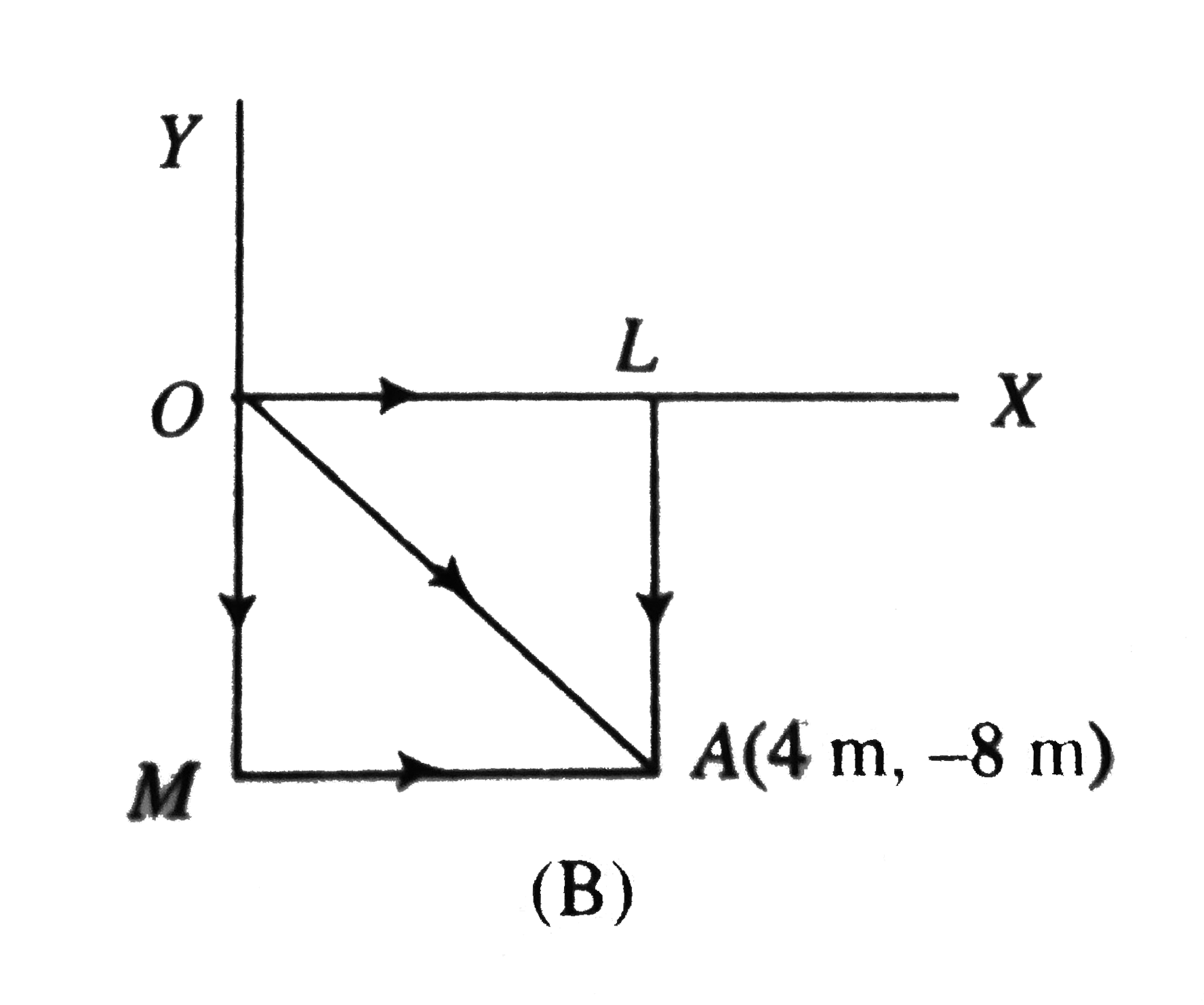Force acting on a particle moving in the x−y plane is →F=(y2ˆi+xˆj)N,x and y are in metre. As shown in fig. the particle moves from the origin O to point A(6m,6m). The figure shows three paths, OLA,OMA and OA for the motion of the particle from O to A.

Along which of the three paths is the work done maximum.
OA
OMA
OLA
work done has the same value for all the three paths
The correct Answer is:A
Step by step video, text & image solution for Force acting on a particle moving in the x-y plane is vec F=(y^(2) hat i + x hat j) N, x and y are in metre. As shown in fig. the particle moves from the origin O to point A(6m,6m). The figure shows three paths, OLA,OMA and OA for the motion of the particle from O to A. Along which of the three paths is the work done maximum. by Physics experts to help you in doubts & scoring excellent marks in Class 11 exams.
Updated on:21/07/2023Topper's Solved these Questions
- WORK POWER AND ENERGYBook:NARAYNAChapter:WORK POWER AND ENERGYExercise:Level-V (Integer)
Explore 5 Videos
- WORK POWER AND ENERGYBook:NARAYNAChapter:WORK POWER AND ENERGYExercise:Level-VI (Single Answer)
Explore 31 Videos
- WORK POWER AND ENERGYBook:NARAYNAChapter:WORK POWER AND ENERGYExercise:Level-V (Multiple Answer)
Explore 13 Videos
- WORK , ENERGY & POWER Book:NARAYNAChapter:WORK , ENERGY & POWER Exercise:EXERCISE IV
Explore 43 Videos
Similar Questions
Force acting on a particle moving in the x-y plane is →F=(y2ˆi+xˆj)N, x and y are in metre. As shown in figure, the particle moves from the origin O to point A (6m,6m). The figure shows three paths, OLA, OMA, and OA for the motion of the particle from O to A.
Now consider another situation. A force →F=(4ˆi+3ˆj)N acts on a particle of mass 2kg. The particle under the action of this force moves from the origin to a point A (4m,−8m). Initial speed of the particle, i.e., its speed at the origin is 2√6ms−1. Figure shows three paths for the motion of the particle from O to A.

If the potential energy at O is 16J, the potential energy at A will be
View SolutionForce acting on a particle moving in the x-y plane is →F=(y2ˆi+xˆj)N, x and y are in metre. As shown in figure, the particle moves from the origin O to point A (6m,6m). The figure shows three paths, OLA, OMA, and OA for the motion of the particle from O to A.
Now consider another situation. A force →F=(4ˆi+3ˆj)N acts on a particle of mass 2kg. The particle under the action of this force moves from the origin to a point A (4m,−8m). Initial speed of the particle, i.e., its speed at the origin is 2√6ms−1. Figure shows three paths for the motion of the particle from O to A.

Speed of the particle at A will be nearly
View Solution
Knowledge Check
Force acting on a particle moving in the x−y plane is →F=(y2ˆi+xˆj)N,x and y are in metre. As shown in fig. the particle moves from the origin O to point A(6m,6m). The figure shows three paths, OLA,OMA and OA for the motion of the particle from O to A.

Work done for motion along path OA is nearlyA383JB90JC180JD1811JForce acting on a particle moving in the x-y plane is →F=(y2ˆi+xˆj)N, x and y are in metre. As shown in figure, the particle moves from the origin O to point A (6m,6m). The figure shows three paths, OLA, OMA, and OA for the motion of the particle from O to A.

Which of the following is correct?A(a) There is equal probability for the force being conservative or non-conservative.B(b) Conservative or non-conservative nature of force cannot be predicted on the basis of given information.C(c) The given force is non-conservative.D(d) The given force is conservative.Force acting on a particle moving in the x-y plane is →F=(y2ˆi+xˆj)N, x and y are in metre. As shown in figure, the particle moves from the origin O to point A (6m,6m). The figure shows three paths, OLA, OMA, and OA for the motion of the particle from O to A.

Work done for motion along path OA is nearly
 A(a) 383JB(b) 90JC(c) 180JD(d) None of these
A(a) 383JB(b) 90JC(c) 180JD(d) None of these
The position of a particle at time moving in x−y plane is given by →r=ˆi+2ˆjcosωt. Then, the motikon of the paricle is :
View SolutionThe position of a particle at time moving in x−y plane is given by →r=ˆi+2ˆjcosωt. Then, the motikon of the paricle is :
View SolutionA particle moves in the xy plane according to the equation
→r=(ˆi+2ˆj)Acosωt
The motion of the particle is
View SolutionThe position vector of a particle moving in x−y plane is given by
→r=(Asinωt)ˆi+(Acosωt)ˆj then motion of the particle is :
View SolutionA particle moves in x-y plane according to the equation ¯r=(ˆi+2ˆj)Acosωt the motion of the particle is
View Solution

